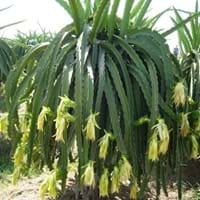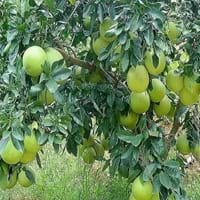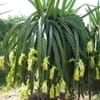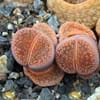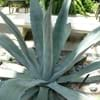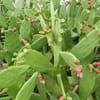Life Span
Perennial
Perennial
Origin
Caribbean, Central America
Southeastern Asia, Polynesia
Types
Hylocereus undatus, Hylocereus costaricensis, Hylocereus megalanthus
African Shaddock,Chandler Pomelo,Kao Phuang Pomelo,MeloGold Pomelo-Grapefruit,Minneloa Tangelo
Number of Varieties
Not Available
Habitat
Rocky areas, Terrestrial
Clay soil areas, Coastal Regions
USDA Hardiness Zone
11-15
10-11
Sunset Zone
H1, H2, 21, 22, 23, 24
H1, H2, 8, 9, 12, 13, 14, 15, 16, 17, 18, 19, 20, 21, 22, 23, 24
Habit
Spreading
Oval or Rounded
Flower Color
White, Gold
White
Flower Color Modifier
Bicolor
Bicolor
Fruit Color
Red
White, Yellow, Light Pink
Leaf Color in Spring
Not Available
Green, Dark Green
Leaf Color in Summer
Not Available
Green, Dark Green
Leaf Color in Fall
Not Available
Green, Dark Green
Leaf Color in Winter
Not Available
Light Green
Leaf Shape
Toothed
Compound
Plant Season
Summer, Fall
Spring, Summer, Fall, Winter
Sunlight
Full Sun
Full Sun, Partial Sun
Type of Soil
Loam, Sand
Loam, Sand
The pH of Soil
Acidic, Neutral, Alkaline
Acidic, Neutral
Soil Drainage
Well drained
Well drained
Bloom Time
Early Summer, Summer
Indeterminate
Tolerances
Drought
Drought
Where to Plant?
Container, Ground, Pot
Ground
How to Plant?
Cuttings, reseeds, Stem Cutting
Grafting, Seedlings
Plant Maintenance
Medium
Medium
Watering Requirements
Average Water Needs, Keep the Soil well drained
Needs watering once a week, Requires consistently moist soil
In Summer
Lots of watering
Lots of watering
In Spring
Moderate
Moderate
In Winter
Average Water
Average Water
Soil pH
Acidic, Neutral, Alkaline
Acidic, Neutral
Soil Type
Loam, Sand
Loam, Sand
Soil Drainage Capacity
Well drained
Well drained
Sun Exposure
Full Sun
Full Sun, Partial Sun
Pruning
Remove damaged leaves, Remove dead branches, Remove dead leaves
Remove damaged leaves, Remove dead branches, Remove dead leaves
Fertilizers
All-Purpose Liquid Fertilizer
All-Purpose Liquid Fertilizer
Pests and Diseases
Red blotch
Red blotch
Plant Tolerance
Drought
Drought
Flower Petal Number
Semi-Double
Single
Fragrant Bark/Stem
No
Yes
Foliage Texture
Bold
Medium
Foliage Sheen
Not Available
Glossy
Attracts
Not Available
Birds, Butterflies
Allergy
no allergic reactions
Dermatitis, Skin irritation
Aesthetic Uses
As decorated salad, Beautification
Not Available
Beauty Benefits
Not Available
Brightens the skin complexion, Skin Problems
Environmental Uses
Air purification
Air purification, Food for birds, Food for insects
Medicinal Uses
Antidiabetic, Appetite enhancer, increase memory, Weight loss
Acne, Detoxification, Digestion problems, epilepsy, Kidney Stones, Nutrients, Obesity
Part of Plant Used
Fruits
Flowers, Fruits, Leaves, Seeds
Other Uses
Not Available
febrifuge, Tea-like beverage can be brewed
Used As Indoor Plant
Yes
Insignificant
Used As Outdoor Plant
Yes
Yes
Garden Design
Container, Feature Plant, Houseplant, Rock Garden, Wall, Tropical
Container, Edible, Fruit / Fruit Tree, Shade Trees, Tropical
Botanical Name
HYLOCEREUS undatus
CITRUS maxima 'Hirado'
Common Name
Pitahaya, Dragon fruit, Night blooming Cereus, Strawberry Pear, Belle of the Night, Cinderella Plant, Jesus in the Cradle
pomelo, pomello, pummelo, pommelo, pamplemousse, jabong, shaddick,or shaddock
In Hindi
Red Pitaya
चकोतरा
In German
Drachenfrucht, Distelbirne
Pampelmuse
In French
pitaya, fruit du dragon, cierge-lézard, poire de chardon
Citrus maxima
In Spanish
pitahaya roja (Colombia, Mexico, Venezuela); flor de caliz, pitajava (Puerto Rico); junco, junco tapatio, pitahaya orejona, reina de la noche, tasajo (Mexico)
Citrus maxima
In Greek
Φρούτο του δράκου (fruto tu draku)
Not available
In Portuguese
pitaia, cato-barse, cardo-ananaz, rainha da noite
Pomelo
In Polish
Red Pitaya
Pomarańcza olbrzymia
In Latin
Red Pitaya
Citrus maxima
Phylum
Magnoliophyta
Magnoliophyta
Class
Magnoliopsida
Magnoliopsida
Order
Caryophyllales
Sapindales
Family
Cactaceae
Rutaceae
Clade
Angiosperms, Core eudicots, Eudicots
Angiosperms, Eudicots, Rosids
Subfamily
Cactoideae
Aurantioideae
Number of Species
Not Available
Not Available
Importance of Red Pitaya and Pummelo
Want to have the most appropriate plant for your garden? You might want to know the importance of Red Pitaya and Pummelo. Basically, these two plants vary in many aspects. Compare Red Pitaya and Pummelo as they differ in many characteristics such as their life, care, benefits, facts, etc. Every gardener must at least have the slightest clue about the plants he wants to plant in his garden. Compare their benefits, which differ in many ways like facts and uses. The medicinal use of Red Pitaya is Antidiabetic, Appetite enhancer, increase memory and Weight loss whereas of Pummelo is Acne, Detoxification, Digestion problems, epilepsy, Kidney Stones, Nutrients and Obesity. Red Pitaya has beauty benefits as follows: Not Available while Pummelo has beauty benefits as follows: Not Available.
Compare Facts of Red Pitaya vs Pummelo
How to choose the best garden plant for your garden depending upon its facts? Here garden plant comparison will help you to solve this query. Compare the facts of Red Pitaya vs Pummelo and know which one to choose. As garden plants have benefits and other uses, allergy is also a major drawback of plants for some people. Allergic reactions of Red Pitaya are no allergic reactions whereas of Pummelo have Dermatitis and Skin irritation respectively. Having a fruit bearing plant in your garden can be a plus point of your garden. Red Pitaya has showy fruits and Pummelo has showy fruits. Also Red Pitaya is not flowering and Pummelo is not flowering . You can compare Red Pitaya and Pummelo facts and facts of other plants too.
